#just realised Michael Reeves the director
Text
5 underrated Richard Donner movies you need to see
https://ift.tt/eA8V8J
Richard Donner will forever be remembered as the filmmaker who created the blueprint for the modern superhero blockbuster with 1978’s Superman starring Christopher Reeve.
Yet that doesn’t tell even half the story of the Bronx-born filmmaker’s brilliant filmography.
Donner was in his late 40s by the time Superman came along, having made a name for himself in Hollywood two years earlier, with 1976’s suitably terrifying The Omen.
Prior to that, he was a budding director making the transition from the small screen to the world of cinema. Donner worked on everything from Gilligan’s Island to The Twilight Zone. Even then, it was clear he was destined for bigger things though, as anyone who saw “Nightmare at 20,000 Feet”, the iconic episode of The Twilight Zone he directed, starring William Shatner, can attest.
While a disagreement with producers ultimately saw him walk away from Superman II, the 1980s saw Donner establish himself as an incredibly versatile big budget director capable of handling everything from the epic family adventure fun of The Goonies to the balancing act of action and comedy found within the buddy cop antics of Lethal Weapon.
It was a skillset that drew admiration from the very best in the movie industry, including Steven Spielberg who was among the first to pay tribute to Donner after learning he had passed away, aged 91.
“Dick had such a powerful command of his movies, and was so gifted across so many genres,” Spielberg, who worked with Donner on The Goonies, said.
“Being in his circle was akin to hanging out with your favourite coach, smartest professor, fiercest motivator, most endearing friend, staunchest ally, and – of course – the greatest Goonie of all.”
Donner may not have had the same impact in the 1990s and early 2000s but he still enjoyed major success with the Lethal Weapon franchise and as a producer with movies like Free Willy and X-Men.
More importantly, the other films he made during that period and in the years between some of his biggest hits remain well worth revisiting or seeking out for the first time – starting with these five.
Ladyhawke
Coming hot on the heels of The Goonies and two years prior to Lethal Weapon, Ladyhawke represented another major departure for Donner. A dark medieval fantasy, it centred on Rutger Hauer’s mysterious Captain Etienne Navarre and his female companion Lady Isabeau (Michelle Pfeiffer), a pair of star-crossed lovers on the run from a vengeful bishop who has placed a demonic curse on their heads. While Navarre transforms into a wolf by night, Isabeau exists as a Hawk by day. Teaming up with petty thief Philippe Gaston (Matthew Broderick) they embark on a quest to overthrow the evil bishop and break the spell.
Something of a passion project, Donner had attempted to get Ladyhawke off the ground several times before finally getting the green light from Warner Bros and 20th Century Fox in the mid ’80s. The film then suffered another setback when Kurt Russell, originally cast as Navarre, dropped out during rehearsals.
That ultimately proved a blessing in disguise with Hauer going on to deliver arguably his best performance since Blade Runner. Not everything about Ladyhawke works – Broderick’s character feels a little too close to Ferris Bueller while the runtime could be trimmed down – but it remains a beautifully realised fantasy epic, full of memorable action set pieces, stunning cinematography and a spellbinding turn from Pfeiffer.
A box office bomb upon release, Ladyhawke has stood the test of time too, garnering a cult following as an authentic and fresh take on the sword and sorcery formula.
Maverick
Maverick is the film Will Smith must have hoped Wild Wild West would be; a funny, clever action comedy based on a classic TV show. Coming in an era when most westerns were deadly serious, Donner’s film also felt like a breath of fresh air and benefited hugely from a masterful William Goldman script that was both witty and unpredictable.
The latest in a series of films featuring Donner’s muse-of-sorts, Mel Gibson, this time out Mel plays Bret Maverick, a brilliant card player and equally impressive con artist trying to collect enough money to earn a seat at a high-stakes poker game. Along the way he is forced to contend with a fellow scammer in the form of Jodie Foster’s Annabelle Bransford as well as lawman Marshal Zane Cooper, played by James Garner, who starred in the original TV series.
While the glut of cameos from country music stars and the likes of Danny Glover can be a little distracting, there’s something wonderfully charming about Maverick with Gibson, Foster and Garner all on top form and boasting an undeniable chemistry that helps keep things entertaining.
The climactic poker game which sees Maverick face off against Alfred Molina’s psychopathic Angel is also expertly handled by Donner, who cranks up the tension as Maverick reveals his final, decisive, hand with a slow-motion toss of the final card towards the camera. A critical and financial success, Maverick has been largely lost in the shuffle since its release but should be sought out.
Conspiracy Theory
There’s something strangely prescient about Conspiracy Theory given the current predilection for such thinking on the internet at large. One of Donner’s most inventive and intelligent outings alongside Gibson, this time out Mel plays Jerry Fletcher, a New York City cab driver with a penchant for paranoid conspiracy theories.
Jerry’s life takes a turn for the strange when he finds himself being targeted by a set of shady government goons led by Patrick Stewart’s Dr Jonas. He quickly realises one of the conspiracies he has been promoting in his weekly newsletter (this was the ‘90s) is based more in reality than he thought. The question is: which one?
An engrossing thriller featuring Donner’s trademark dashes of witty humour, Conspiracy Theory is bolstered significantly by the presence of the ever-reliable Julia Roberts as a government lawyer with a soft spot for Jerry. Despite a lengthy run time, Donner also keeps the action moving along at an engaging pace while Gibson’s performance is just the right side of manic to keep you rooting for him.
A first foray into the kind of deep state conspiracy thrillers that were commonplace in Hollywood at the time, the film also boasts some genuinely striking moments, not least the sequence where Jerry undergoes “psychotic testing” at the hands of Dr Jonas, which wouldn’t have looked out of place in A Clockwork Orange.
Though it was a hit with audiences, Conspiracy Theory earned mixed reviews but appears increasingly worthy of reappraisal.
Timeline
Some movies are big, dumb but lots of fun. Timeline sits firmly in that category despite what many naysayers would have you believe. It’s a brash, simplistic sci-fi flick to rival the likes of The Core and Geostorm and thoroughly entertaining to boot.
The fact that it features Gerard Butler, as well as the late, great, Paul Walker only adds to that sentiment.
Walker plays Chris Johnston who, along with Butler’s Andre Marek and a team of fellow archaeologists travel back in time through a wormhole to 14th century France to rescue their professor, Dr Edward Johnston (Billy Connolly), who just happens to be Walker’s character’s dad too.
Based on a book by Michael Crichton, Donner had been in the running to direct Jurassic Park a decade earlier and jumped at the chance to adapt Timeline for the big screen. While filming went off without a hitch, Donner repeatedly clashed with Paramount Pictures in post-production and was forced to re-cut the film three times in a development that saw the release date pushed by nearly a year. The resulting edit did not sit well with Crichton either, who disliked it so intensely he stopped licensing his work for a few years after.
Whether Donner’s original cut would have earned better reviews or Crichton’s approval remains to be seen but what remains of Timeline is still a well shot, enjoyable sci-fi yarn with some neat medieval action flourishes.
16 Blocks
Donner’s final film also ranks among his most unappreciated. On the surface, 16 Blocks sounds like the perfect fodder for a game of buddy cop movie bingo.
It stars Bruce Willis as Jack Mosley, a worn-out NYPD Detective with a drinking problem tasked with transporting Mos Def’s trial witness Eddie Bunker to court. Problems arise when some of Jack’s fellow officers arrive to kill Eddie and prevent him from testifying. Eager for redemption, Jack decides to take the would-be assassins on and get Eddie to court on time.
A formulaic enough premise, 16 Blocks is emboldened by the fact it plays out in real-time with Eddie required at the courthouse by no later than 10am. In this sense, Donner found himself in new territory with an action thriller that thrives on a unique sense of urgency.
While the filmmaker is no stranger to the action formula, this setup sees him imbue events with a renewed sense of chaos, as Jack and Eddie fight their way through armed adversaries, busy crowds and bustling traffic, all against a cacophony of shouts, car horns and gun blasts.
Ostensibly a chase movie on foot rather than four wheels, the action traverses 16 blocks in 118 minutes and rarely lets up for a second with Donner proving a dab hand at balancing the action with the engaging back-and-forth between Willis and Def who are both understated yet effective throughout.
cnx.cmd.push(function() { cnx({ playerId: "106e33c0-3911-473c-b599-b1426db57530", }).render("0270c398a82f44f49c23c16122516796"); });
Throw in the ever-watchable David Morse as the leader of the shady cops baying for Eddie’s blood and you have arguably one of the most underrated action thrillers of the early 2000s
The post 5 underrated Richard Donner movies you need to see appeared first on Den of Geek.
from Den of Geek https://ift.tt/3AA61tK
2 notes
·
View notes
Text
Dear John: A love letter to the John Wick Movies

Let me start by saying I am having a John Wick moment, and just an all-round Keanu moment. Occasionally, when I’m at a certain level of stress and/or boredom, my brain will default to thinking about one subject. At the moment that subject is the powerhouse which is Keanu Reeves.
I could go into detail about all the reasons, both psychologically and cinematically for this Keanu phenomenon(keanomenon), but instead I want to tell you about why I love the John Wick movies specifically.
Let’s start with the first movie, John Wick. I first saw this movie in the wrong state of mind. Recently, I watched Movies with Mikey’s review and decided I needed to re-watch John Wick in a better mood. What I hadn’t realised the first time round is just how perfect and self-contained this movie is. In total isolation from the sequels, John Wick tells a simple revenge story clearly and concisely. Just like the titular character, John Wick doesn’t fuck around. The exposition isn’t clunky; you’re told very clearly who everyone is and why they matter. There’s a quick “context montage” explaining Wick’s motivation, and for the emphasis of important lines, subtitles appear on screen to make sure you don’t miss anything. This is one of the things I love about John Wick movies: director Chad Stahelski is not afraid to tell the audience what is going on. A great example of this is the scene in mob nightclub The Red Circle – a scene that is visually busy and potentially confusing for viewers who are tired and just wanted some Keanu goodness to make their bad day better.
This scene comes out of the screen with blue and red hands and holds your attention in a way that is unforgettably stylish. The red and blue in the early “Pool Party” segment of the scene give way to a chaotic mix of purple and green in the club, with flashes of harsh white light when we see Iosef (Wick’s ultimate target in this film, played by king of the fictional assholes Alfie Allen.) Even though the club scene is crowded, Reeves’ eyeline is used to tell us that Wick will not harm civilians, as his gaze searches for and locates the mobsters he’s targeting.
This is combined with top quality sound design. We’re all used to soundtrack dissonance after Guardians of the Galaxy rammed it firmly down the throat of all movies everywhere. It’s refreshing to see music used in a way that simply complements the action. Soft, electro-pop is combined with the stealthy, cat-like killings in the pool area, giving way to loud bass driven club music in (you guessed it) the club. Sound designer Alan Rankin doesn’t let the music mask the violence of the scene, we hear the pained grunts of dispatched henchmen, gunshots puncture the music with gay abandon – the sound design is unflinching, you can’t escape from the action.
These elements come together to create an audiovisual experience that is completely arresting. Reeves creates a character that, in spite of being incredibly violent, is somehow utterly likable. John Wick isn’t complicated; he is a straightforward character with a straightforward motivation. The simplicity of his character is so aggressively compelling you can’t help but root for him. He’s also not infallible. He falls over. He has to reload at awkward moments. When he gets hit, he bruises and when he gets cut he bleeds. Even though by the time you’re halfway through John Wick: Chapter 3 – Parabellum you get the idea that this man has something akin to superhuman strength and magic steel bones, Wick is a far more human action hero than we are usually presented with. This combines with the fact that despite how graceful he looked in the Matrix, Keanu Reeves’ limbs are just a little too long for his body. This results in moments that are almost comically flail-esque, but which endear him to the audience all the more. Just like Wick’s motivation, the message of the movie is simple: look, he’s got a funny run and he’s sad about his dog – root for this guy.
I also can’t write about John Wick without mentioning the late Michael Nyqvist’s incredible performance as mob boss Viggo. As soon as Viggo hears what his son has done, and who he’s done it to – he knows John Wick is coming for him, and he knows he won’t survive, but he has to protect his family. Viggo goes through the motions of protecting Iosef, and as the movie goes on, becomes more physically crumpled. By the final act, he’s laughing as Wick arrives to dispatch him to the underworld. Viggo’s hopelessness is the perfect way to cement Wick’s character as an unstoppable force, the grim reaper of organized crime.
John Wick is a perfect film, and the sequels were never going to be able to compete. That doesn’t mean they’re bad, just different. What I love about Chapter 2 and Chapter 3 – Parabellum is that they almost feel like fan fiction about the character of John Wick. These films, while more chaotic and plot-heavy than the first installment, are clearly made with love by a team who want to work together. Reeves is having the best time playing an unstoppable assassin who just wants to get home to his damn dog, while Director and ex-stuntman Stahelski is putting together action sequences that are the stuff of dreams. The pencil scene in Chapter 2 or the library fight which opens Chapter 3: these films are packed with mad-cap ideas that verge on slapstick, but somehow work perfectly in the universe the films have created. No potential stunt set-up is left unresolved. As soon as you see a series of glass cases full of glass skulls in Chapter 3 you think “Sure would be a shame if someone threw Keanu Reeves through one of those glass cases full of glass skulls”, and the film does not disappoint. This is not Chekov’s gun; this is Chekov’s whole gosh-darned armoury.
These films have action, compelling characters, bizarre aesthetic choices that somehow totally work (I’m looking at you, random control room full of tattooed vintage-styled ladies), and a surprising amount of humour. The dialogue isn’t ground-breaking, but Stahelski has created fight scenes with genuine laughs in, and the odd excellent one-liner. What makes the sequels so enjoyable is that everyone involved seems to be having a great time, Ian McShane is in his element as top-cat Winston, while Halle Berry kicks more ass in her brief Wick appearance than she did in all of the X-Men movies put together.
Keanu Reeves said it best when discussing his horseback fight sequence in Chapter 3: “That’s why we want to go to the movies, to see the fantastical.”
#john wick#john wick chapter 3#parabellum#keanu reeves#keanu moment#movies#film#love this movie#recommended#10/10 would recommend#chad stahelski#halle berry#i'm thinking i'm back
60 notes
·
View notes
Text
Casting The Batman
Director Matt Reeves said in a Q&A that he expects THE BATMAN to start production at the end of this year. Now that's still quite a way off, but for that to happen a few things need to happen... like casting.
It's be confirmed that Ben Affleck has stepped away from the Batcave, and we're now looking at a new actor putting on the cowl.
Firstly, we need to asses... is Reeves' Batflick part of the DCEU, or does it stand aside, like the upcoming JOKER movie starring Joaquin Phoenix, despite the fact Jared Leto is expected to carry on as the Clown Prince of Crime within the shared universe.
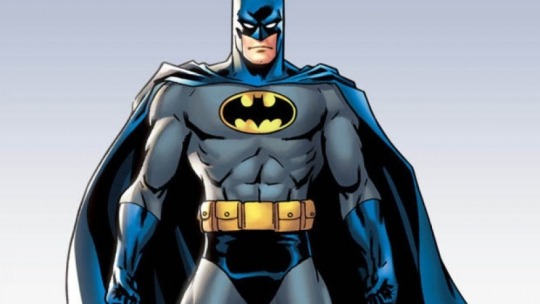
Why is this important? Well, Whilst Affleck is going off, that doesn't mean the supporting characters have to change cast, especially if it's in the shared universe. Particular roles are in place. Jeremy Irons as played Alfred in two movies now, and JK Simmons popped up in the JUSTICE LEAGUE as Commissioner James Gordon. Either of those actors could continue. Even if this movie is in the past. Sure a younger actor in either part may make sense, but CAPTAIN MARVEL just proved you can do a whole film with nifty de-aging effects (Samuel L Jackson's Nick Fury).
Whilst I will, naturally, look towards who could be cast in supporting (and villainous) roles, right now we're going to focus on the big issue. Who should play Batman?
Below are a list of different actors who I've seen suggested, or am suggesting myself, that could end up as the next Dark Knight. I've included a variety of ages too... just covering the bases.
KARL URBAN
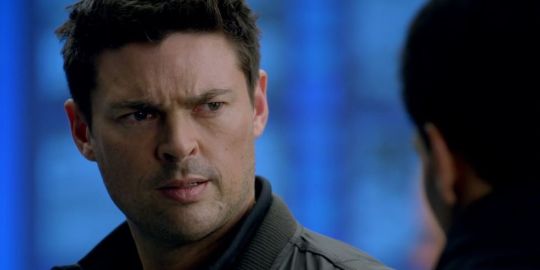
This one was an obvious inclusion. Before Affleck was announced, Urban was my (and seemingly half the internet) top choice. Probably best known currently as Dr McCoy in the new age STAR TREK movies, he also appeared as DREDD, and more recently played Skurge in THOR: RAGNAROK over in the MCU. He's around the same age as Affleck (both born in 1972), so this would be more of a direct recast, but a popular one I believe.
ROBERT PATTINSON
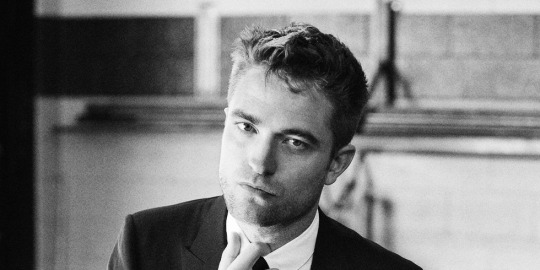
Urg. No. This would annoy me... but a major rumour recently was that the TWILIGHT star was in talks for Bruce Wayne and his alter ego. To be honest, it wouldn't be the WORST casting in the DCEU (Jesse Eisenberg as Lex Luthor, anyone?) and I would still give the guy a go. It's just not a casting I'd be excited about. With Pattinson we'd have a Batman in his early 30s.
ARMIE HAMMER
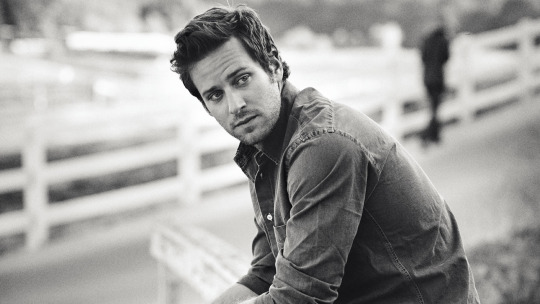
The funny thing with this one... it was basically reported that Hammer had got the job. The actor had to debunk the casting himself. There's quite a fanbase for the actor to get this role, and to be fair, he had once been attached to a Batman role in the past, when he was cast as Bruce Wayne in a defunct JUSTICE LEAGUE movie. Still, whilst the actor said nobody (in power) had talked to him, the media buzz may have brought him to the attention of Reeves... so I wouldn't rule out this casting entirely. I'd certainly prefer it to Pattinson. Both actors are the same actor as 32.
AIDAN TURNER

This Irish actor is very popular with the ladies (good for Bruce Wayne) and was a sheer highlight as vampire Mitchell in BEING HUMAN (the UK series)… He's currently the heartthrob lead in POLDARK, and was the heartthrob dwarf Kili in THE HOBBIT trilogy. And whilst there probably has been a lot of onus on his looks, he just happens to be a really good actor, and in his mid 30s, I believe shouldn't be dismissed as a potential Batman (or Bond!).
TARON EGERTON
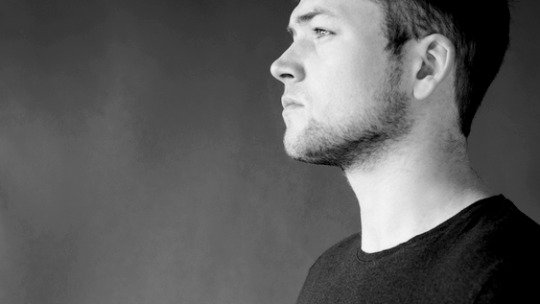
Now, this wouldn't be an ideal choice, but I'm throwing it in there. Egerton's currently 29, so the youngest on my list at this point, and he's making quite a name for himself. I think his best qualification for Batman is his role in the KINGSMAN franchise, but he also recently played ROBIN HOOD. He's possibly a little on the short side for Batman, and whilst he has the physicality for the role, I don't think he's the best fit for Bruce Wayne. However, I would definitely put him near the top of a NIGHTWING list. As Dick Grayson does become Batman at some point, I thought it'd be fair to include him on here.
K J APA
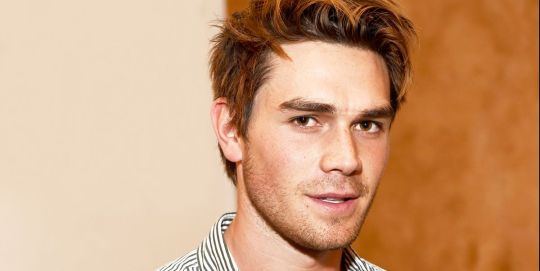
Apa's the youngest person on this list at 21. If I'm honest, I'm not sure he quite has the charisma for Bruce Wayne, and he feels a little young for Bats, but that might be what Reeves is looking for. Apa is Archie, the lead character in RIVERDALE, and he does get to play detective - which plays into comments Reeves has made.
KIT HARINGTON
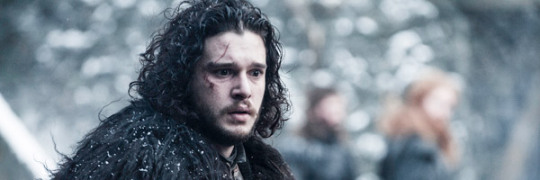
Funnily enough, I was actually going to include Harington's onscreen brother Richard Madden, from GAME OF THRONES but I've switched it. Harington certainly has the broody look down. We all know how Batman likes to brood, and with GoT coming to an end, Kit's probably looking for a new high-profile acting gig. THE BATMAN wouldn't be a bad way to go. Not sure how people would take to this casting though, I'm not sure how the actor is perceived in the public eye. Agewise, he's inline with the likes of Pattinson and Hammer.
LIAM NEESON

I said, I'd be cover all the bases, and this one's going the other way, with an older actor. Liam Neeson is 66. He's already been a part of the Batworld, featuring in THE DARK KNIGHT trilogy as villain R'as Al Ghul. But what if we turned that around and made him the big man himself. Casting Zeus, Aslan and Qui-Gon Jinn as Batman works for me!
JEFFREY DEAN MORGAN
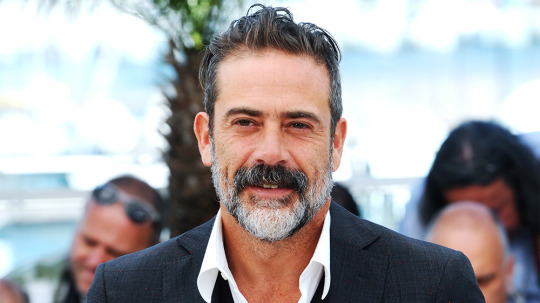
Okay, so this is not a clear-cut choice... but I'm throwing it out there anyway. Morgan played Thomas Wayne in the opening scenes of BATMAN V SUPERMAN. We know that there's an upcoming move (supposedly) based on FLASHPOINT, and in that, rather than Bruce becoming Batman, his father does instead. What if the DCEU are clever and tie this alternative reality into the cast change... handing the cowl over to Morgan. Personally I like it. Recasting Batman without recasting Bruce Wayne. Morgan is in his 50s, and currently plays the violent Negan in THE WALKING DEAD.
BRAD PITT
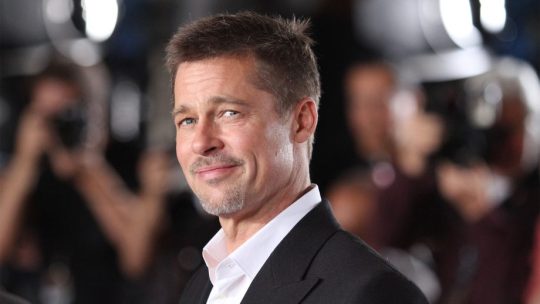
No, really. Like Morgan, Pitt is in his 50's, but he's still got that good-looking, swagger (perfect for an aging Bruce), and he'd be a pretty commercial choice I think. Plus, Pitt is a pretty decent actor. He'd be able to display a few different facets for the caped crusader, and might be able to channel that dark SEVEN vibe, tying in with Matt Reeves' noir detective tale.
Now, I should probably start wrapping this list up. I've already listed 10, but there's still two more I think deserve a mention. One positive, one negative.
JAKE GYLLENHAAL
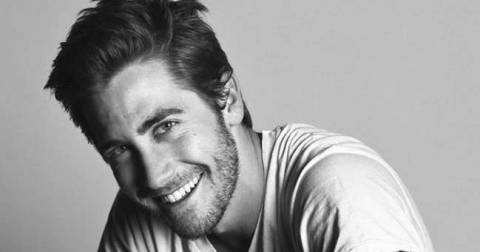
Now, you're probably expecting Jake to be the positive, but no. I do not like the idea of him playing Batman. He's not right for the role. So why am I including him now? Gyllenhaal was a possible casting way back when Christian Bale was cast. As were Joshua Jackson and Wes Bentley. I'd actually rather Bentley get given the shot of any of them, but Jake gets the mention because apparently Matt Reeves may have his eye on him. I'm not against JG as an actor, in fact I'm looking forward to his turn as Mysterio in SPIDER-MAN: FAR FROM HOME over at the MCU. I just don't think he'd be *my* Batman if he were to be cast.
Which leaves us with...
OSCAR ISAAC

I saw Isaac's name pop up on another list, and you know what... I wouldn't mind it. I wouldn't have thought of him myself, He's half Guatemalan, half Cuban, which would add ethnicity to the character that had typically been played by straight up white American or Brits, with being as controversial as, say casting Idris Elba (who, incidentally has joined the DCEU as Deadshot, replacing Will Smith). Isaac is suave enough to play Bruce, and intense enough to play Batman. He's a good actor, and now has quite a following thanks to his part in the current STAR WARS trilogy. Of the twelve candidates listed here, he's definitely up the top end for me.
It would have been quite easy to fall in with listing every dark-haired furrow-browed actor in Hollywood, but I tried to streamline the list a little. Personally for me, my tick rests near Urban still, although I accept it's unlikely. It's going to be interesting to see who they do go with in the end. There was a lot of negativity against Affleck's casting, but I think most can agree he's been a highlight of the DCEU.
Whoever get's cast, will be filling the shoes of Adam West, Michael Keaton, Val Kilmer, George Clooney, Christian Bale and Affleck. Soon, I'll also be looking at the supporting cast - including an actor I almost included here as a potential Batman, but then realised I'd love to see him as a Riddler...
#batman#the batman#bruce wayne#Matt Reeves#the dark knight#dceu#karl urban#robert pattinson#armie hammer#aidan turner#taron egerton#kj apa#kit harington#Liam Neeson#Jeffrey Dean Morgan#brad pitt#jake gyllenhaal#Oscar Isaac#star wars#game of thrones#The Walking Dead#twilight#spider-man far from home#MCU#riverdale#Kingsman#robin hood#poldark#Being Human#the hobbit
51 notes
·
View notes
Text
Hack Job: Why Were Hacker Movies Ever A Thing?

Lately i’ve been thinking about that weird and almost completely failed subgenre of movie that attempted to light up the LCD screens of our hearts, but instead faded like a broken computer screen: the hacker film. Now, I could ask what good the sub-genre has ever done for us, but the answer to that is clear and just a few inches above this block of text. The genre birthed this iconic Matthew Lillard role from the movie Hackers, in which he plays a (wait for it!) hacker named...erm...Cereal Killer. Because....he likes Cereal? Sure, lets go with that! He’s a character described by June Diane Raphael on an episode of the podcast How Did This Get Made? as “Disgusting”, and she is not completely wrong. He is disgusting, bizarre and the strangest character Lillard has played, and i’m including Shaggy in the live action Scooby Doo films. He’s a character that must be experienced, and once experienced, never forgotten. I mean - you’ve seen what he fucking looks like.
But my point remains: outside of Cereal Killer (I am bolding his name because he is an Important Man), the genre has offered up very little to the world. I admittedly know nothing at all about hacking, and I don’t care at all about Hacking, like, i’d presume, 90% of people currently residing here on earth. But I cannot imagine that people who love Hacking (or Hacker Fuckers, if you will) queuing up to see Hackers, a film that thinks this is what the internet looks like:

Now, i’m no city-slickin’ mouse-clickin’ hacker, but I don’t think that’s what the internet looks like. I could be wrong, and character actor Fisher Stevens (I was about to write “beloved” character actor, but then I remembered Short Circuit) could be skating through a flashing pillar of internet right now. It’s a cool thought! Hackers came along in 1995, when future optimism was higher than it had been in years, as everyone believed the tech-bubble would never burst (spoiler alert: it did!) and that the new millennium would bring a world of positive changes and possibilities. The poor, innocent souls of 1995 could never have possibly imagined the true horrors waiting for them on the other side of the millennium...
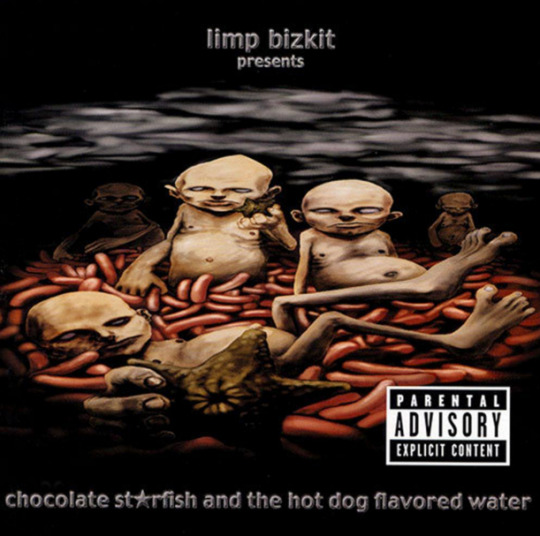
But before Fred Durst became a thing in a hat that you had to look at, technology was booming, affordable and exciting. You got transparent Macs that allowed you to see through into the mechanical nonsense inside it. The new fangled e-mail gave us (I don’t know why i’m saying “us”. I was 3 years old in 1995. Babies don’t get emails) all the opportunity to open your email and then close it again as many times as you liked! So this is what producers saw when they started making movies like Hackers. They put their strongest marketing minds together and came up with “People got computers now. Make comPUTER FILM!”. Those wild bastards actually went and did it! And weirdly, Hackers was kinda ahead of its time. It might’ve been wildly inaccurate in almost every possible way, but it paved the way for a wave of (well, like 3) films. The Matrix wouldn’t be released for another 4 years, and Swordfish a further 2. If it did incite a trend, it was the only trend started by Director Iain Softley, his later film K-Pax tragically failing to kick start a new genre of films in which Kevin Spacey eats bananas with their skins still on.
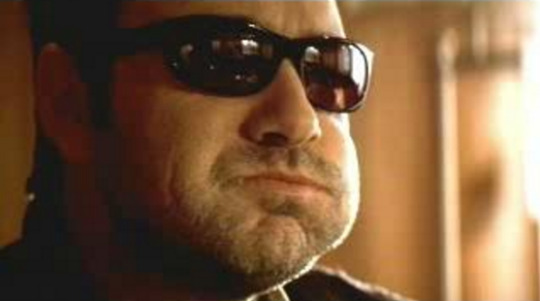
Good stuff! Hackers does feel like a film that is unsure of whether it’s trying to replicate fads or start them off. I mean, characters rollerblade everywhere for no apparent reason in the film. That might be something Hackers do? I’ve never seen Mr Robot, so I cannot categorically say that Rami Malek doesn’t rollerblade his way around town like a Starlight Express extra who really hates computers. But I doubt it. So with the rollerblading, and the way....ugh...Cereal Killer dresses, it seems like the film is offering you up its own funky ideas that you could follow on from if you want to get murdered on the streets. Did its aesthetic style have influence? Was the game Jet Set Radio from 2000 and its rollerblading theme influenced at all by Hackers? Did Eminem see Johnny Lee Miller’s bleached blonde hair in the film (quick deeply important side note: his character is named Dade. DADE.) and think “huh. that would really compliment my insufferable personality!”? We’ll never know. The film is a weird exercise in style and trends, and the soundtrack, crammed with The Prodidgy and Underworld, is proof that at least the soundtrack department had its finger on the pulse. And, it could be argued that the film’s costume department at least came up with some creative cyber-punk clothing, and were bold enough to make Penn Jillette look like this:
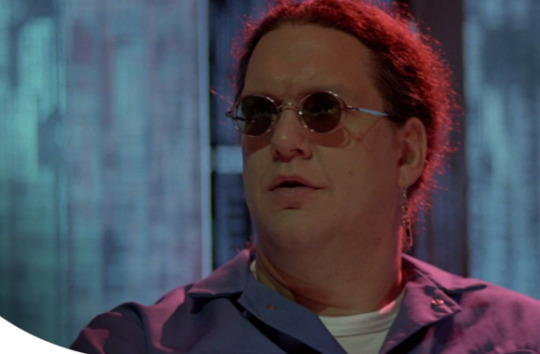
The thing is, I liked the weirdness of it all, I like this misfires in capturing modern life, and inaccuracy doesn’t bother me really if a film is fun enough. I’m not a stickler for realism. I didn’t sit down to Face/Off and complain that it’s totally unbelievable that John Travolta is a human person. That’s not the issue. The issue, really is that with all the giant screen Playstations, pounding trance tracks and references to Coca Cola (weird, I thought Mountain Dew would be the Hacker’s choice), the film is in troubled water because of the fact that Hacking is unbelievably, deeply fucking boring. It is not interesting in seeing someone go clickety clack on a keyboard and make occasional faces to indicate that “oh no! the mainframe is busting my chops!” or “Huzzah! I clicked the mouse really fast just now!”.
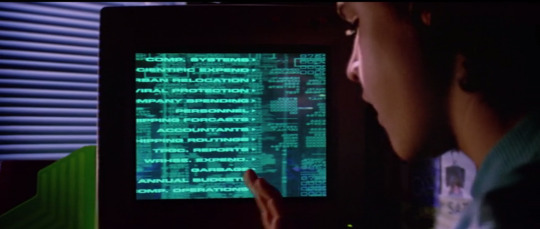
Thankfully, the film has some fairly decent editing which intersperses the clickety-clacking with some long exposure, sped up shots of New York City just in case you forgot it was the 90′s. The fact that they need to cut away to exciting, zooming shots that have nothing to do with anything highlights the fact that the Director and Editor knew exactly what i’m talking about: HACKING IS FUCKING BORING (if you’re a hacker reading this, please don’t hack me). And they’ve built an entire film around it! A whole nonsensical plot which involves (as far as i can remember) big ships and evil corporations that want to sink the big ships is built on Hacking. Thank god this film is so wildly ridiculous, which keeps it from being entirely boring. It’s smart in that it knows to not make the film actually about hacking, but then you kind of ask yourself the question: why is this film about Hacking at all? Why is it called Hackers? Maybe a better name would’ve been ‘Bladin’ Teenz’, as an ode to their endless rollerblading. It’s a fun film, but a dumb film and proof that films entirely about hacking cannot really work.
The Matrix was a wise film. Exploiting that hip, late-90s techno excitement that everyone was buzzing over, it featured a hacker at its centre who really doesn’t do much hacking at all. In fact, Morpheus might as well have said “You Hack? Dude fucking grow up. Come on, i’ll make you a treat”. Sure, you’ve got the iconic green gibberish that turns up on the computers and would inspire a million shitty screensavers, but again the hacking is intercut with other action going on in the film. You have characters typing away and yelling shit like “I’m nearly in!” or “i’m not nearly in!” or “I am unsure of whether I am, in fact, in, nearly in, or not nearly in!”. But that is manageable and minimal, and in the end there’s so much more to remember about The Matrix that I don’t think anyone, when asked what it’s about, would say “Oh it’s about Keanu Reeves hacking on his dell”. It understood this caveat, and created its own style which would influence every single music video ever produced over the next 5 years.


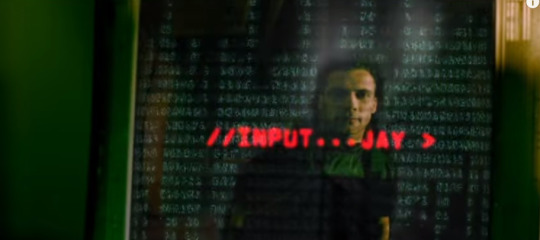
These are screenshots from the video for Don’t Wanna Let You Go by 5ive, a very bad UK Boy-band that had 4 singers and 1 rapper, all of whom it’s safe to assume have passed away.
The Matrix had the style, and the smarts to sidestep bland hacking scenes. You know what film doesn’t understand that hacking is boring? Fucking Swordfish.
Fucking Swordfish. A film so aesthetically ugly and repulsive in every way that it does the unthinkable and makes you hate Hugh Jackman. But it commits the biggest sin of all by giving John Travolta a teeny tiny beard - a decision which we still feel the fallout from today, whenever a new red carpet photo arrises of John’s new chin abomination.
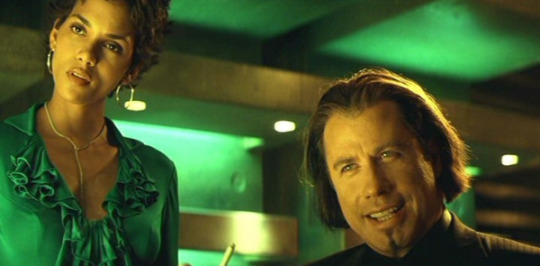
Looking like a cup of concentrated Michael Bay piss, the film leans heavily into stylishness - or lack thereof. Hugh Jackman is basically...sigh...DADE in the movie, and Travolta is regularly outfitted with funny sunglasses. It borrows a lot from Hackers, but while that had a naive, 1995 goofy charm, Swordfish is an aggressively stupid and oblivious movie, that gives us a LOT of Hacking. Like...so much Hacking. The Most Hacking. Oh, The Fucking Hacking. Its a reminder of just how boring Hackers or The Matrix could’ve been if they’d fallen into the wrong hands, and a big, horribly colour-corrected reminder that films about hacking really aren’t the best. Instead of cutaways of cityscapes, Swordfish tries to build the tension during one hacking scene in the grossest way possible: by having Hugh Jackman’s character receive forced fellatio while he works, and while John Travolta smiles. It doesn’t make a boring scene exciting, it makes a boring scene fucking disgusting (the movie’s grossness doesn’t stop there. Halle Berry was heavily pushed into taking her top off in the movie, and promised extra money if she did it.). The Hackers method of randomised cutaways feels a million miles away during these scenes, and you will be willing to pay any earthly sum to make the scene unfolding in front of you stop. Maybe that’s how hackers should make their money from here on in: stop hacking, and just start blackmailing people by forcing them to watch Swordfish. Fucking Swordfish.
The movie was also a bit of a death knell for a subgenre that never really took off. People realised “Oh, this is dull and crap to watch!” when it came to hacking, and technology moved on rapidly that there was a lot more to do with it than watch some guy slapping the keys of his iMac. I find it a really interesting subgenre to look back at, because i’m a huge fan of outdated technologies, fashion styles, turn of the millennium culture, and really quite poor films (besides The Matrix which holds up nicely). Hollywood has tried to make a manner of subjects interesting. Stock markets. Fishing. White people who buy zoos. Some work, some don’t, and it’s all about the way the subject is handled. Because of their reliance on technology, these hacking films feel so dated that maybe Hollywood doesn’t want to risk dipping its toes back into the cyberwaters again. I kind of hope they don’t, because I would literally rather never see a film again than have to even know that a film about Anonymous is being made. I don’t want an ‘edgy’ modern movie that’s made for Banksy to watch while he plunges his hands down his pants and goes to town. I want silly old Cereal Killer and towers of nonsense computer language dammit! I want rollerblading, coke-drinking cyberpunks! Oh well. Whatever happens to the genre, at the very least, we’ll always have Dade and The Gang....
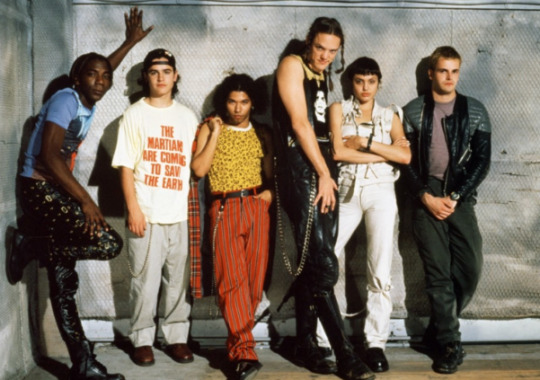
271 notes
·
View notes
Text
THE UNDERLINING FAILURE OF WARNER BROS AND THEIR DC FILM UNIVERSE
Poisonous work environments, an incompetent studio, well-meaning directors, rushed scripts, a rebellious mustache, and the Wonder Woman who nearly saved them all.

Just under five years ago, following the finale to Christopher Nolan’s Dark Knight trilogy, Warner Bros. released their Superman reboot, Man Of Steel. Directed by Zack Snyder with Nolan serving as Executive Producer, Henry Cavill’s modern version of the Big Blue Boy Scout was met with a polarised reception; many praised Snyder’s visual style and the blockbuster action, along with the attempts made to fit Clark Kent in to the paranoid, “all seeing and all knowing” internet age, as well Michael Shannon’s take on Krypton’s genocidal General Zod. Just as many people, however, found these attempts to be dour, plodding and far too clinical - completely missing the warmth and heart that made Christopher Reeves’ Superman so special in the 70s. (For the record, going forward, you should know I am firmly amongst the former, despite not being a big fan of it when it came out. It has grown on me immensely.)
Despite the mixed reviews, the film was a modest success at the box office, earning almost $700 million (a big jump from Superman Returns’ $390million in 2006) and was considered by many fans to be a reasonably strong start from which to build upon. And while the box-office returns would be more than acceptable for a first film in almost any franchise (Batman Begins, Nolan’s first Batman film, made about half that), Warner Bros. viewed it as a lacklustre start to their rebooted franchise, and sought ways to improve upon the film’s “modest” success. Man Of Steel 2 seemed like an exciting prospect for many.

Before we get too far down the rabbit hole, lets take a small step back to 2008. Marvel Studios, under the guidance of their President Kevin Feige, have just released Iron Man, directed by Jon Favreau and starring Robert Downey Jnr. as the title character - a billionaire weapons manufacturer and technology developer named Tony Stark who is captured by a terrorist organisation in Afghanistan. With a piece of shrapnel about to enter his heart and kill him, Stark designs and assembles a weaponised suit of magnetised armour which allows him to escape. Upon returning home, Stark abandons his industrialised ways to make a difference as the superhero Iron Man. The film received rave reviews, with Downey Jnr. being lauded for his performance as the CGI-enhanced Shellhead, and it went on to gross over $500 million worldwide.
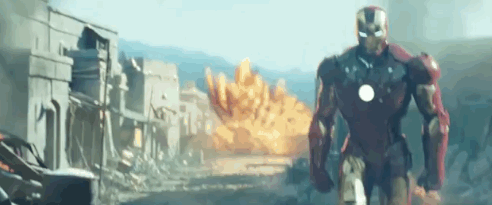
As the first film in what has popularly become known as Phase One of the Marvel Cinematic Universe, Iron Man laid the groundwork for what was to evolve over the next ten years for Marvel Studios. Biannually, Feige and his studio released one film after another, beginning with solo adventures and origin stories like Iron Man, Iron Man 2 Captain America: The First Avenger, Thor, and The Incredible Hulk, alluding to a greater universe without directly hinging each story on other character’s involvement. After four years and five films, Marvel Studios brought together their band of heroes for their first team-up adventure - the Joss Whedon helmed The Avengers. A box office smash, The Avengers pulled in nearly $1.5billion at the global box office and received strong reviews, with critics praising the seamless and organic culmination of the characters previous trajectories into the same story.
Following on from the success of The Avengers, Marvel then expanded their cinematic universe by bringing in new characters and continuing to evolve their existing ones - Phase Two included Guardians Of The Galaxy and Ant-Man, alongside Iron Man 3, Thor: The Dark World, and Captain America: The Winter Soldier which led themselves into Avengers: Age Of Ultron, again directed by Joss Whedon. This is the template that Marvel have followed right up until the very moment that you read this article. Feige runs a tight ship; giving directors just enough room to create something for themselves, while maintaining the overarching goal that the series will be heading towards next.
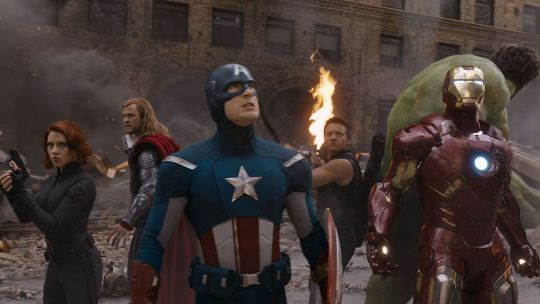
What is the relevance of all that to DC, you ask? Well, we jump forward to the Summer of 2014, where Warner Bros decided to amp up their plans for their DC properties following Man Of Steel using the Marvel model. At the San Diego Comic-Con, Zack Snyder took to the stage to announce that he would be directing the follow-up to his Superman film. There was further rapture among the attendees as it was announced that Warner Bros. were using the film to launch their DC Extended Universe and that the sequel was to be Batman v Superman: Dawn Of Justice; Batman and Superman were to share a cinema screen for the first time in history, with Ben Affleck playing the The Dark Knight opposite Henry Cavill. The film would also mark the first big-screen appearance of Wonder Woman, played by Gal Gadot.
On top of that, David Ayer, the scriptwriter/director behind films such as Training Day, Harsh Times, End Of Watch and Fury, was given the job of bringing Suicide Squad to the big screen for the first time. A rather left-field project considering the universe’s infancy; Suicide Squad focuses on a rogue gallery of villains (mainly from the Batman universe) who are forced together to complete a near-impossible mission for the Government. The film had an ensemble cast which included Will Smith, Margot Robbie, Viola Davis, Jai Courtney, and Jared Leto as the new version of The Joker, Batman’s arch-nemesis.
Sounds great right? Well, unfortunately we all know how it turned out. In a desperate bid to achieve Marvel level incomes in a much shorter space of time, Warner Bros. essentially coerced Snyder into packing Batman v Superman with nods, Easter Eggs and groundwork for their planned Justice League film (which would end up being released in November 2017) as well as teasing The Flash, Aquaman, Cyborg and many subplots lifted from various comic book arcs. As a result of this constant studio meddling, the film became a bloated behemoth of absolutely mind-blowing proportions. It’s first rough cut was nearly four hours long. At this point, Warner Bros. realised that the film could not be any longer than two and a half hours - this was to ensure a maximum number of screenings could be held on any given day during its theatrical run; more tickets, more money.
Snyder originally intended to tell a modern Superman story - where Kal-El would slowly and progressively accept his destiny as the Man Of Steel in a world that doesn’t trust heroes anymore, and sees him as a potentially dangerous illegal alien (cough). All very ambitious and interesting, despite the often heavy handed religious metaphors that he uses to frame the character through. However, the compromises forced upon him by a naturally money-driven but irrationally thinking studio resulted in his arc for Cavill’s version of the character being condensed, diluted and sucked of any and all impact - despite his best efforts to provide Superman with the strong sense of morality and righteousness that the character was known for.
When Batman v Superman was released in March 2016, it was greeted with strongly negative reviews, and its record-breaking opening weekend ($400million+) quickly tapered off and it finished its run with a $873 million - earning a profit but falling short of the studio’s $1billion+ expectations. Taking into account the film’s massive budget, rumoured to be just south of $400million, this final tally was a massive blow for both the studio and for Snyder, who suffered the wrath of online critics and keyboard-happy but overall very disgruntled fans. An extended “Ultimate” Cut was released on home video, which added nearly 30 minutes of footage - but while this certainly improved the film overall by reinstating vital subplots and was much better received by fans, it didn’t remove the bad taste left behind by the version that was released in theatres.

Suicide Squad didn’t fare much better in the end, either. In order to meet the August 2016 release date, David Ayer was given less than six weeks to write the script for the film before it needed to start filming. Upon the reveal of the first teaser at the San Diego Comic-Con in 2015, many fans reacted negatively to its dour, dark tone. Following the release of a much more brisk and light trailer (complete with “Bohemian Rhapsody” by Queen thumping away on the soundtrack) in January of the following year, the studio decided to go back and “add some jokes” along with more action to the film through re-shoots. It was after these re-shoots that the film’s marketing campaign began to pick up speed, with a number of pulpy trailers making a conscious effort to emphasise how much fun Suicide Squad was going to be following the criticisms of over-seriousness towards Batman v Superman in March. The re-jigging and re-adjustments did not end there, however.
Warner Bros., worried that Ayer’s cut of the film would not meet the expectations they had set, had the film taken away from him in secret. All shot material was handed over to Trailer Park, the same company who had been responsible for editing together the well-received trailers for the film. Ayer, meanwhile, turned in his version. Warner Bros. took both versions and amalgamated the two. The result? The visually incoherent, music video style film that was released in theatres and ended up receiving the same brutal reviews that Snyder’s film had. Suicide Squad did however make significant bank for the studio - it brought in $745million against a $200million budget. Ayer would go on to publically claim that it was still his film, and that the released cut was true to “his vision”, despite evidence to the contrary and claims from various sources (including Jared Leto) that there was enough footage excised “to make another movie”. The film also had an Extended Cut on home release, but it wasn’t nearly as impactful as the Ultimate Cut for Snyder’s superhero smackdown.

In case you hadn’t noticed, there’s a pattern emerging here. And if you genuinely hadn’t noticed, then just wait til we start talking about Justice League.
The one slam-dunk that Warner Bros. have had so far came in 2017. No, it wasn’t Justice League. It was Wonder Woman. Gal Gadot’s version of Diana of Themyscira made such a strong impact in Batman v Superman that she deservedly received her own solo film - an origin story set during the First World War. Directed by Patty Jenkins, the film became the highest grossing female-directed film of all time (as well as the highest grossing Superhero origin story) with a take home of over $800million worldwide. The film was also acclaimed by critics; praise was afforded to Gadot’s performance as the title character and the chemistry between her and Chris Pine, the story, score and Jenkins’ direction. Jenkins had to fight for a number of sequences to be included, including the now famous “No Man’s Land” scene which features Diana taking on a horde of German soldiers who have besieged a French town. Warner Bros. immediately greenlit a sequel (to be directed by Jenkins) and pushed Gadot front and centre for marketing materials on Justice League - where she essentially took over the team leader position usually occupied by either Batman or Superman. Wonder Woman became the DCU’s bright spark of hope.

Zack Snyder immediately began work on Justice League, the DC Film Universe equivalent to The Avengers, after he had finished work on Batman v Superman. The ensemble team-up film began shooting in London in the Spring of 2016. The relationship between Warner Bros. and Snyder could be described as shaky at best by this stage, and the negative press following the release of Batman v Superman going into the start of shooting for Justice League was constantly hanging over the heads of all involved. Snyder (along with his wife, Deborah), as a producer, was the official creative driving force behind the universe up til that point. Unofficially, as you will have gathered from the above, there was no singular driving force. However, prior to the release of Suicide Squad, Geoff Johns was drafted in by Warner Bros. under the title of Chief Creative Officer of DC Films. Johns is a well known comic-book scribe and has penned works for a variety of DC characters, including The Flash, Aquaman and Superman. A lot of creative control was wrestled away from the Snyders, despite filming on Justice League not yet being complete. A continuing trend of requests and alterations were made by the studio. Despite this, filming for Justice League wrapped in October 2016, after a six-month shoot. Re-shoots were planned for early 2017, with Avengers director/writer Joss Whedon coming on-board to assist Snyder with “adding more jokes” to what was described as a film that was tonally continuing the motifs established in Man Of Steel and Batman v Superman.
Approaching what we thought was the middle of a long period of post-production work, Snyder announced he was stepping away from the project to be with his family - as his daughter had recently committed suicide. The decision was presented as an mutual one, with Warner Bros. insisting that Whedon remain on the film to finish Snyder’s “vision”. Whedon then proceeded to re-shoot approximately 30-35% of the film, change the ending and remove several subplots and key scenes that had been already shot. Henry Cavill had to re-shoot 90% of his scenes as Superman, a fact very-obviously revealed by the awful digital removal of his (rather wonderful) mustache that he was contractually obligated to grow and keep for Mission Impossible: Fallout.
The real kicker here is that not all of this is accurate; it’s merely the official version. In the months following Batman v Superman’s release, Warner Bros. executives were eager to remove Snyder from Justice League. Their Head Of Production at the time was Greg Silverman, who refused to fire Snyder. Silverman was later removed by Warner Bros. CEO Kevin Tsujihara. In January 2017, Snyder was fired from Justice League - with Silverman gone, Snyder was finished; he never even got to finalise a cut of the film he had been planning for nearly two years. Obviously fearing more negative publicity towards the film, Snyder’s removal was kept under wraps until the death of Snyder’s daughter became public knowledge, and at that point Warner Bros. choose to reveal that he had stepped down to be with his family. Make from that what you will.
In November 2017, like Batman v Superman and Suicide Squad before it, Justice League was released to miserable reviews. Critics and audiences pulled the film apart - citing its uneven tone, short running time and poor pacing, a boring and underdeveloped villain, and subpar visual effects. While a number of people considered Whedon’s more joke-focused dialogue to be an improvement, many found it completely out of place with the visual look and feel of the film, as well as being completely out of character (referring to Batman). Despite the amount of tinkering done to the original version of the film (which also had an hour cut from the runtime as well as the other structural changes), Snyder’s name remained on the credits as director. Whedon received a screenwriting credit. Factoring in the re-shoots on top of its extensive and expensive principal photography, the film apparently cost Warner Bros. nearly $300million before accounting for marketing costs, making it one of the most expensive films of all time. So expensive was it, that it would have had to generate over $700million just to break even thanks to distribution revenue shares.

Justice League made $656million worldwide.
Meanwhile, Black Panther - a character first introduced to the Marvel Cinematic Universe in 2016′s Captain America: Civil War but who I think it’s fair to say was not very well known compared to say, Batman or Superman - is on track for his solo film to open to $170million in its opening weekend alone. Avengers: Infinity War is looking like it’s going to be one of the biggest films of all-time, both physically (with over 90 speaking main cast members) and financially (it’s likely to cross the $2billion mark by the time it’s all dried up).
What will Warner Bros. learn from this? Probably nothing. What should they learn from this? Well, it seems that the studio executives watched the Marvel Cinematic Universe develop with one eye watching the spreadsheets, but with no idea on how you get the numbers on those sheets to spike they way they did. Instead of organically building on the foundation laid by Snyder with Man Of Steel (a film that admittedly is not perfect but is still very solid), a rush job was enacted in order to join the Billion Dollar club as quickly as possible - a feat they have yet to accomplish despite having films that have such iconic characters in them. Unfortunately, the damage seems to be done. Ben Affleck seems to be on his way out as the Caped Crusader due to having multiple scripts for his proposed solo film rejected along with his deteriorating relationship with the studio - a massive blow considering how strong he was in the role in the face of frustratingly under-developed material given to him. The only DC films currently guaranteed are Aquaman, Shazam, and Wonder Woman 2, while both The Batman and Man Of Steel 2 look to be going nowhere. Quite incredible, really.

The overall consensus at the moment is that while these films will continue to be loosely connected in some way or another, going forward they will ultimately be standalone projects. Warner Bros. seem to be signalling that they will instead focus on hiring higher-end filmmakers and making good films again. However, the allure of the ensemble superhero film will always be there as long as connected movie universes continue to be popular, and the flipside to working with higher-end filmmakers on standalone projects is that they will always want more control - just like Christopher Nolan did on The Dark Knight trilogy, which were successful thanks to the fact that there was little interference. It’s telling that the two highest rated DC Universe films, Man Of Steel and Wonder Woman, were the ones least meddled in. For the moment, though, the DC Universe seems to be stalled over very high ground. Marvel fans should count themselves lucky that they have Kevin Feige.
It’s a massive shame that instead of sitting here typing about how great this universe is, I’m wondering when the final nail is going to be put into its coffin. What a waste. Many people online will be quite happy to lay the blame at Zack Snyder’s feet, but considering what his original plans for the development of the universe were compared to what we got, I find it hard to not acknowledge that there is a serious problem at the top of the food chain concerning how these films, and the people behind them, have been handled and treated. One thing is for sure - these films and “their vision” will likely continue to divide critics and audiences alike for some time.
It’s not an S, in our boardroom it means $.

0 notes
Text
'War for the Planet of the Apes' Easter Eggs: Nod to the Original You Missed
http://styleveryday.com/2017/07/15/war-for-the-planet-of-the-apes-easter-eggs-nod-to-the-original-you-missed/
'War for the Planet of the Apes' Easter Eggs: Nod to the Original You Missed
The ultimate entry in the new trilogy is really a launching point for the original film.
[Warning: This story contains spoilers for War for the Planet of the Apes]
War for the Planet of the Apes is here to wrap up the trilogy started in 2011’s Rise of the Planet of the Apes, but in many ways the latest entry in the decades-old franchise is really a setup for the 1968 original.
Loaded with Easter eggs and references to other installments in the series, War carries on the story of Caesar (Andy Serkis), the hyper-intelligent chimpanzee who went from James Franco’s pet project in Rise to a leader in 2014’s Dawn of the Planet of the Apes to his final turn as mythic figure in War.
While the timelines for the original film and the rebooted trilogy don’t add up (Charlton Heston’s Apes films take place in the far future), there are notable hints, nods and references in this year’s War. In a recent interview with Yahoo! Movies, director Matt Reeves addressed the convoluted timeline.
“Caesar’s apes are not like those apes [in the ’68 movie] and Nova is a nod towards that. None of which is to say there’s nothing literal about the connection, that’s more of a trajectory,” Reeves said. “That [trajectory] changed in Rise of the Planet of the Apes. It’s clear in the original [1968] story when Taylor comes to this planet, he doesn’t think it’s planet Earth, and then he realises it is, that’s the big twist of the movie. You realise that evolution – 5000 years of evolution – after the humans have destroyed themselves, have allowed the apes to take over the planet. That’s accelerated and changed dramatically through the ALZ-113 in Rise, so they’ll never meet up, but what it does is it tells the end of the story in a way that is taking all of these stories and removing the question of ‘what happened?’ and instead focussing it on the ‘how?’ So this ends up getting to be a blockbuster that’s all about character and all about the sort of thematic, of us holding the mirror up to ourselves.”
With that out of the way, here’s a look at some of the best nods in War to the original film.
Serkis’ Caesar, the hero of this new trilogy, is in fact not the first ape named after a famous Roman leader in the series. That distinction belongs to his ancestor (possibly grandson depending on the timeline?), who made his first appearance in 1971’s Escape from the Planet of the Apes, the third entry in the franchise — though his original name was Milo. Milo, who changed his name to Caesar later in life, is the son of Cornelius, the same name of Caesar’s infant son who makes a brief appearance in War. Cornelius, as fans of the ’60s original will remember, goes on to become an archeological scientist and is one of the main ape protagonists who, along with his wife Zira, helps Heston’s Taylor escape from confinement.
Taylor’s mute female (and human) companion also (possibly) makes an appearance in War. The young girl discovered by Caesar, Maurice (the orangutan played by Karin Konoval) and Luca (the gorilla played by Michael Adamthwaite) has already succumbed to the new virus that reduces human beings speaking ability to animal grunting, but with the help of her newfound ape guardians, the audience discovers she still retains much of her humanity and ethos. In one of the film’s more touching moments, the young girl asks Maurice if she, too, is an ape. At a loss for “words” (he can’t speak, only signs) Maurice produces the insignia from a Chevy Nova that was found earlier in the film at Bad Ape’s (Steve Zahn) hideout. “You are Nova,” Maurice signs to the bright-eyed youth, the very name of Taylor’s mute compatriot in the not-so-distant future.
Also worth noting is Maurice’s genus. He’s an orangutan, just like Dr. Zaius, the main antagonist from the original film. (He was played by Maurice Evans, whom the orangutan in the reboot was named for). The two characters share more similarities than just their orange fur, as Zaius is an extremely influential leader in his time, much like Maurice. Does this imply a familial connection between the two characters? Hard to say, but orangutans are one of the more rare species in the films. Whatever connection they may share, Dr. Zaius’ violent religious zealotry is a far cry from Maurice’s soft compassion for humans.
One other tidbit that may be familiar to Apes franchise fans is Bad Ape’s choice of attire. Notably, he is the only ape who wears clothing in the new film—even the mutinous “donkeys” that serve Woody Harrelson’s Colonel do not wear the clothing of their human counterparts. Bad Ape, however, has an eye for fashion in the style of blue, down-filled vests. Once again, this seemingly minor detail has larger implications, as that particular stylistic choice proves quite popular for the hyper-evolved apes of the near future.
War for the Planet of the Apes
#Apes #Easter #Eggs #Missed #Nod #Original #Planet #War
0 notes